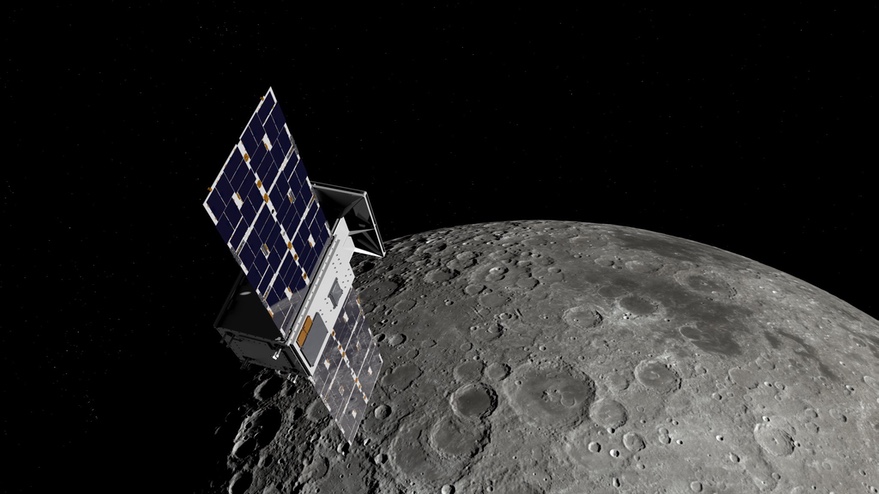WASHINGTON — A NASA lunar cubesat mission has lost contact with Earth a day after its deployment, putting into jeopardy its plans to demonstrate the orbit that will be used for later Artemis missions.
In a July 5 statement, NASA said the Cislunar Autonomous Positioning System Technology Operations and Navigation Experiment (CAPSTONE) cubesat “experienced communications issues” during its second pass with the Deep Space Network (DSN) after its July 4 deployment from Rocket Lab’s Lunar Photon kick stage. Amateur satellite observers had noticed a lack of transmissions from the spacecraft, prompting speculation something had gone wrong with it.
Been looking for #CAPSTONE on X-band and no signals seen today. DSN NOW showed hours of transmitting (cycling between S-band and 2 X-band uplinks) but no downlink from the spacecraft this afternoon.
Hope @nascom1 gets a response! pic.twitter.com/2bFEeMRccG
— Scott Tilley 🇺🇦 (@coastal8049) July 5, 2022
“The spacecraft team currently is working to understand the cause and re-establish contact,” NASA said in its statement, noting controllers had good data on the spacecraft’s trajectory from the first DSN pass and second, but partial, DSN pass. “If needed, the mission has enough fuel to delay the initial post-separation trajectory correction maneuver for several days.”
While CAPSTONE is a NASA-funded mission, it is operated by Advanced Space, a Colorado-based startup. The company has not commented on the situation with CAPSTONE beyond the NASA statement, nor has Terran Orbital, the company that built the spacecraft for Advanced Space.
CAPSTONE is flying a low-energy trajectory that will take it more than 1.2 million kilometers from Earth, eventually going into a near-rectilinear halo orbit around the moon in November. That trajectory was designed to minimize the propellant needed by the small spacecraft, weighing only 25 kilograms, to go into orbit.
NASA funded CAPSTONE to collect data on the stability of that halo orbit, which will be used by later Artemis missions and the lunar Gateway. However, agency officials have previously said that while the CAPSTONE data will be helpful to refine plans for those Artemis missions, is it not essential.
Lunar Photon’s extended mission
While CAPSTONE engineers work to restore contact with that cubesat, Rocket Lab says its Lunar Photon vehicle is still operational after boosting CAPSTONE onto its lunar trajectory and releasing it.
Lunar Photon is “well and healthy,” Peter Beck, Rocket Lab’s chief executive, said in a call with reporters July 5. “We’re now in the process of working through a secondary mission for that spacecraft. It seemed too great an asset to have in deep space to not take advantage of and do some cool things.”
He said it was too early to discuss what that extended mission might include, but noted the spacecraft has additional propellant available, as well as generating sufficient power. “It’s really down to comms,” he said, as Rocket Lab is using commercial ground stations rather the DSN to communicate with Lunar Photon.
Beck noted that Lunar Photon could, for example, enter the same halo orbit that CAPSTONE plans to use. “A piece of cake,” he said when asked about that scenario. “We have plenty of propellant for that, so if required, we could do that, no problem.”
Rocket Lab plans to use the same Photon spacecraft for a privately funded Venus mission, replacing the CAPSTONE cubesat with an atmospheric entry probe. “There’s no difference in the spacecraft with the one that will take us to Venus,” he said. “We’re learning a lot and this is a wonderful dry run for the Venus mission.”
